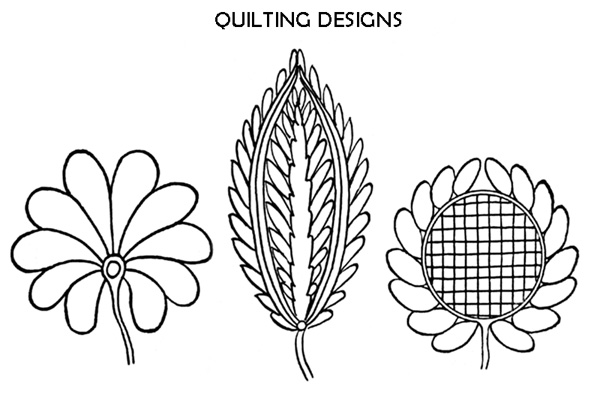Quilting
Quilts and Their Everyday Use
For much of its long history, quilting was primarily a practical technique to provide physical protection and insulation. They were mostly used for bedding and clothing. However, decorative elements were often also present, and many quilts are now primarily art pieces. Today quilts are not always intended for use as bedding, and may be used as wall hangings, table runners, or tablecloths.
The vastness of quilt numbers and the great extent of their everyday use serve to check the collecting of quilts. As a whole, quilts are extremely heterogeneous and democratic; they are made so generally over the whole country that no distinct types have been developed, and they are possessed so universally that there is little social prestige to be gained by owning an uncommonly large number. Consequently even the most ardent quilt lovers are usually satisfied when they possess enough for their own domestic needs, with perhaps a few extra for display in the guest chambers.
Much of the social pleasure of the pioneer women was due to their widespread interest in quilts. Aside from the quilting bees, which were notable affairs, collecting quilt patterns was to many women a source of both interest and enjoyment. Even the most ambitious woman could not hope to make a quilt like every design which she admired, so, to appease the desire for the numerous ones she was unable to make, their patterns were collected. These collections of quilt patterns—often quite extensive, frequently included single blocks of both pieced and patched designs. There was always a neighbourly and friendly interest taken in such collections, as popular designs were exchanged and copied many times. Choice remnants of prints and calicoes were also shared with the neighbours.
In the past, hand quilting was often done in a group around a frame. Instead of quilting, the layers were sometimes tied together at regular intervals with pieces of yarn, a practice known as tying or knotting, and which produces a "comforter". Occasionally from trunks or boxes, long hidden in dusty attics, some of these old blocks come to light, yellowed with age and frayed at the edges, to remind us of the simple pleasures of our grandmothers.
Quilting enjoyed a widespread revival during the Great Depression as a way to recycle worn clothing into beautiful warm quilts. Even very small and worn pieces of material were used in quilt creation or basis for their designs. In the US, patchwork declined after World War II but was again revived during the American bicentennial.
At the present time there is a marked revival of interest in quilts and their making. The evidences of this revival are the increasing demand for competent quilters, the desire for new quilt patterns, and the growing popularity of quilt exhibitions. Concerning exhibits of quilts, there is apparent—at least in the northern part of the United States—a noticeable increase in popular appreciation of those held at county and state fairs. This is a particularly fortunate circumstance for the development of the art, because the county fair, "our one steadfast institution in a world of change," is so intimately connected with the lives and is so dear to the hearts of our people.
Traditional Quilting and Beyond...



